Forman’s and Napier’s casebooks are legendary amongst historians for rewarding those who can read them with intimate details of the lives of thousands of people in early modern England. This page sketches the ways in which they have been studied since the 1970s.
In Religion and the Decline of Magic (1971), Keith Thomas calendared the numbers of consultations held by Forman, Napier and other English astrologers to argue that droves of people turned to them to cope with the uncertainties of life in early modern England. A. L. Rowse’s prurient Simon Forman: Sex and Society in Shakespeare’s Age (1974) described the romantic, pecuniary, and political antics of Forman and the Londoners who consulted him, sometimes relying on misreadings of the manuscripts.
Following Rowse, literary scholars have identified notable figures amongst Forman’s clientele. Emilia Lanier, the accomplished poet, consulted Forman about her health and fortune and became intimate with him (quite how intimate is unclear). Winifred Burbage, wife of the acclaimed actor Richard Burbage, asked Forman about her health. Philip Henslowe, financier of the Rose and Fortune playhouses, consulted Forman about his health and a case of theft. Perhaps the young man called ‘Robert Burton’ who consulted Forman about melancholy was the same Robert Burton who later became famous for his monumental book, The Anatomy of Melancholy (1621). As James Shapiro’s 1599: A Year in the Life of William Shakespeare (2005) and Charles Nicholl’s The Lodger: Shakespeare on Silver Street (2007) show, Forman’s casebooks can add colour to the bard’s poorly-documented life.
Following Thomas’s approach, Michael MacDonald focussed on the cases of madness in Napier’s casebooks. His landmark book, Mystical Bedlam: Madness, Anxiety and Healing in Seventeenth-Century England (1981), combined innovative computational techniques with subtle discursive analysis to demonstrate how, in an era before mental illness was medicalised and its sufferers institutionalised, the astrologer helped his patients and their families to make sense of social and psychological uncertainties. Ronald Sawyer’s 1986 doctoral dissertation, ‘Patients, Healers and Disease in the Southeast Midlands, 1597–1634’, written under MacDonald’s direction, used his sampling methods and profiled Napier’s medical practice as a whole. Through the 1980s, historians used other early modern casebooks to write histories of experiences of illness and healing (see especially Beier (1987), Duden ([1987] 1991), and Williams (1990)), but none of them drew on collections as extensive or complete as Forman’s and Napier’s.
From the 1980s, Forman’s and Napier’s casebooks provided choice examples for social historians, especially those concerned with gender. They feature, for instance, in Patricia Crawford’s ‘Attitudes to Menstruation in Seventeenth-Century England’ (1981), Martin Ingram’s ‘Ridings, Rough Music and the “Reform of Popular Culture” in Early Modern England’ (1984), Anthony Fletcher’s Gender, Sex and Subordination in England 1500–1800 (1995), and Linda Pollock’s ‘Childbearing and Female Bonding in Early Modern England’ (1997). As social history gave way to cultural history, Forman’s and Napier’s casebooks attested to the workings of early modern bodies, as seen, for instance, in Ulinka Rublack’s ‘Fluxes: The Early Modern Body and the Emotions’ (2000), Laura Gowing’s Common Bodies: Women, Touch and Power in Seventeenth-Century England (2003), and Lesel Dawson’s Lovesickness and Gender in Early Modern English Literature (2008).
In dialogue with Thomas and MacDonald, Lauren Kassell’s ‘How to Read Simon Forman’s Casebooks’ (1999) read Forman’s casebooks alongside his writings about astrology and medicine and argued that he used the language of the stars to cultivate his patients’ trust. She developed this argument within her broader study of Forman’s work as an astrologer physician, Medicine and Magic in Elizabethan London: Simon Forman, Astrologer, Alchemist, and Physician (2005). Kassell’s work complements Barbara Traister’s study of Forman’s life and manuscripts, The Notorious Astrological Physician of London: Works and Days of Simon Forman (2001). Kassell’s ‘Casebooks in Early Modern England: Astrology, Medicine and Written Records’ (2014) situates Forman’s and Napier’s casebooks within a broader history of record keeping practices.
The Casebooks Project released the first batch of searchable cases in 2012. In parallel with our work, social and cultural historians of medicine and gender have returned to questions about patients and drawn examples from a range of practitioners (for instance, Churchill 2012, Weisser 2009 and 2015). More specifically, in ‘The Masque and the Matrix: Alice Egerton, Richard Napier and Suffocation of the Mother’ (2014), Boyd Brogan identified Napier’s treatments for the Egerton sisters and used them to re-read Milton’s Comus. Kirsten Uszkalo’s Being Bewitched: A True Tale of Madness, Witchcraft, and Property Development Gone Wrong (2017) used Napier’s consultations with Elisabeth Jennings and her family to elaborate on a famous seventeenth-century witchcraft case. Napier’s casebooks are central to Ofer Hadass’s Medicine, Religion, and Magic in Early Stuart England: Richard Napier’s Medical Practice (2018), a reassessment of the clergyman’s worldview.
As the Casebooks Project released more cases and refined our search facilities, Forman’s and Napier’s records began to feature in new studies of the classic topics of melancholy (Erin Sullivan, Beyond Melancholy: Sadness and Selfhood in Early Modern England (2016)), reproduction (Daphna Oren-Magidor, ‘Literate Laywomen, Male Medical Practitioners and the Treatment of Fertility Problems in Early Modern England’ (2016)), and gendered bodies (Gabriella Zuccolin and Helen King, ‘Rethinking Nosebleeds: Gendering Spontaneous Bleedings in Medieval and Early Modern Medicine’ (2018)); for choice cases about early modern insomnia (Janine Riviere, Dreams in Early Modern England (2017)); and, most ambitiously, as key evidence in longer-term histories of the shifting disease categories associated with the mind–gut connection (Michael Walkden, ‘Digestion and Emotion in Early Modern Medicine and Culture, c. 1580–1740’) and of migraine (Katherine Foxhall, Migraine: A History (2019)). Through close readings of several of Napier’s cases in ‘Childbirth, “Madness”, and Bodies in History’ (2021), Philippa Carter examines the gendering of ‘madness’ and its connections to childbirth. Kassell’s ‘Fruitful Bodies and Astrological Medicine’ (2018) uses Forman’s and Napier’s casebooks to consider how queries about generation were expressed within and shaped by encounters between patients and doctors in early modern Europe.
Works cited
See also further reading for additional items on Forman and Napier; medical records, cases, and observations; and the patient in history.
- Beier, Lucinda McCray (1987) Sufferers and Healers: The Experience of Illness in Seventeenth-century England, London: Routledge.
- Brogan, Boyd (2014) ‘The Masque and the Matrix: Alice Egerton, Richard Napier and Suffocation of the Mother’, Milton Studies, 55: 3–52.
- Carter, Philippa (2021) ‘Childbirth, “Madness”, and Bodies in History’, History Workshop Journal, dbab004, https://doi.org/10.1093/hwj/dbab004.
- Churchill, Wendy (2012) Female Patients in Early Modern Britain: Gender, Diagnosis, and Treatment, Farnham, Surrey: Ashgate.
- Crawford, Patricia (1981) ‘Attitudes to Menstruation in Seventeenth-century England’, Past & Present, 91: 47–73.
- Dawson, Lesel (2008) Lovesickness and Gender in Early Modern English Literature, Oxford: Oxford University Press.
- Duden, Barbara (1991 [1987]) The Woman Beneath the Skin: A Doctor’s Patients in Eighteenth-century Germany, trans. Thomas Dunlap, Cambridge, MA: Harvard University Press.
- Fletcher, Anthony (1995) Gender, Sex and Subordination in England 1500–1800, New York and London: Yale University Press.
- Foxhall, Katherine (2019) Migraine: A History, Baltimore: Johns Hopkins University Press.
- Gowing, Laura (2003) Common Bodies: Women, Touch and Power in Seventeenth-century England, New Haven and London: Yale University Press.
- Hadass, Ofer (2018) Religion, and Magic in Early Stuart England: Richard Napier’s Medical Practice, University Park, PA: Penn State University Press.
- Ingram, Martin (1984) ‘Ridings, Rough Music and the ”Reform of Popular Culture” in Early Modern England’, Past & Present, 105: 79–113.
- Kassell, Lauren (1999) ‘How to Read Simon Forman’s Casebooks: Medicine, Astrology and Gender in Elizabethan London’, Social History of Medicine, 12: 3–18.
- Kassell, Lauren (2014) ‘Casebooks in Early Modern England: Astrology, Medicine and Written Records’, Bulletin of the History of Medicine, 88: 595–625.
- Kassell, Lauren (2005) Medicine and Magic in Elizabethan London: Simon Forman, Astrologer, Alchemist, and Physician, Oxford: Oxford University Press.
- Kassell, Lauren (2018) ‘Fruitful Bodies and Astrological Medicine’, in Reproduction: Antiquity to the Present Day, ed. Nick Hopwood, Rebecca Flemming, and Lauren Kassell, Cambridge: Cambridge University Press, 223–40.
- MacDonald, Michael (1981) Mystical Bedlam: Madness, Anxiety, and Healing in Seventeenth-Century England, Cambridge: Cambridge University Press.
- Nicholl, Charles (2007) The Lodger: Shakespeare on Silver Street, London: Allen Lane.
- Oren-Magidor, Daphna (2016) ‘Literate Laywomen, Male Medical Practitioners and the Treatment of Fertility Problems in Early Modern England’, Social History of Medicine, 29: 290–310.
- Pollock, Linda (1997) ‘Childbearing and Female Bonding in Early Modern England’, Social History, 22: 286–306.
- Riviere, Janine (2017) Dreams in Early Modern England, London: Routledge.
- Rowse, A. L. (1974) Simon Forman: Sex and Society in Shakespeare’s Age, London: Weidenfeld & Nicolson.
- Rublack, Ulinka (2000) ‘Fluxes: The Early Modern Body and the Emotions’, History Workshop Journal, 53: 1–16.
- Sawyer, Ronald (1986) ‘Patients, Healers and Disease in the Southeast Midlands, 1597–1634’, PhD thesis, University of Wisconsin.
- Shapiro, James (2005) 1599: A Year in the Life of William Shakespeare, London: Faber and Faber.
- Sullivan, Erin (2016) Beyond Melancholy: Sadness and Selfhood in Early Modern England, Oxford: Oxford University Press.
- Thomas, Keith (1971) Religion and the Decline of Magic: Studies in Popular Beliefs in Sixteenth- and Seventeenth-Century England, London: Weidenfeld & Nicholson.
- Traister, Barbara (2001) The Notorious Astrological Physician of London: Works and Days of Simon Forman, Chicago, IL: University of Chicago Press.
- Walkden, Michael (2018) ‘Digestion and Emotion in Early Modern Medicine and Culture, c. 1580–1740’, PhD thesis, University of York.
- Uszkalo, Kirsten (2017) Being Bewitched: A True Tale of Madness, Witchcraft, and Property Development Gone Wrong, Kirksville, MO: Truman State University Press.
- Weisser, Olivia (2009) ‘Boils, Pushes and Wheals: Reading Bumps on the Body in Early Modern England’, Social History of Medicine, 22: 321–39.
- Weisser, Olivia (2015) Ill Composed: Sickness, Gender and Belief in Early Modern England, New Haven and London: Yale University Press.
- Williams, Katherine (1990) ‘Hysteria in Seventeenth-century Case Records and Unpublished Manuscripts’, History of Psychiatry, 1: 383–401.
- Zuccolin, Gabriella and Helen King (2018) ‘Rethinking Nosebleeds: Gendering Spontaneous Bleedings in Medieval and Early Modern Medicine’, in Blood Matters: Theories of Blood in Late Medieval and Early Modern Literature and Culture, ed. Bonnie Lander Johnson and Eleanor Decamp, Philadelphia, PA: University of Pennsylvania Press, 79–92.


